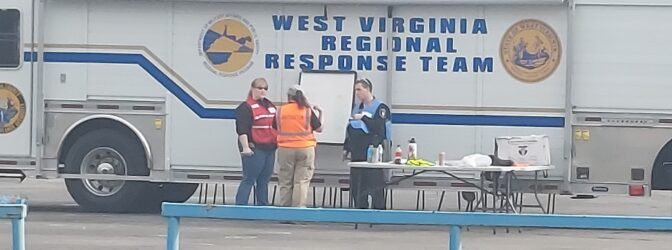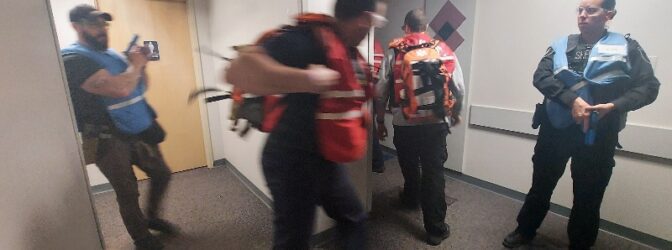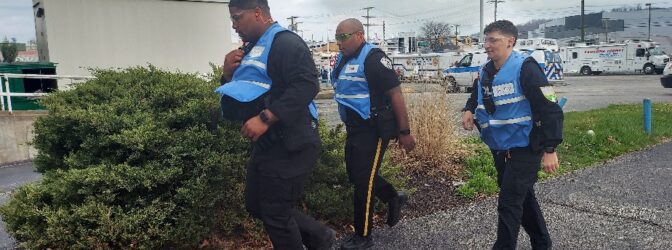CHARLESTON, W.Va. — Dozens of first responders across the Kanawha Valley and beyond came together for an extensive 3-day course in active shooter training.
The Active Threat Integrative Response Course is conducted through Louisiana State University and certified by the Department of Homeland Security. It’s a joint effort of Kanawha County Emergency Ambulance Authority, the West Virginia Public Safety Expo, among law enforcement, fire and emergency personnel from across the region, some as far as Hancock County.
The local training is being held at the former CASCI building along the Kanawha Boulevard, and the current course makes about the fifth one LSU has taught in the state in the past couple of years.
A spokesman for the local Emergency Ambulance Authority, Mike Oakley, says that integration is the key takeaway of the course overall, as it’s designed to improve law enforcement and first responder’s ability to effectively work together in the event of a real-life active shooter situation.
“Basically what we’re doing is teaching the agencies to work together when it comes time for, and we hope it never does, but, if it occurs, and we have some kind of active shooter, how to properly respond and get victims out and save them,” said Oakley.
Oakley added that responding effectively to a situation of such kind is crucial, and it’s not the time for second guesses or making mistakes.
“The time to practice that is not the time when the shots are being fired in anger, this is something that you should have some kind of knowledge of what it looks like, how it works,” he said.
In addition, the course provides law enforcement officers with important medical skills that help to increase the chances of victim survivability, and it provides a model to follow for everyone involved, a model that Oakley said has been working for them.
“They know, ‘okay, this is where we need to go, this is where we need to meet up with these guys, and this is how we do rescue task forces, and this is what it’s supposed to look like,” Oakley said.
Thursday marked the last day of the current round of training and the most challenging. The lead instructor on the course from LSU, James Sellers, said that despite everyone often starting off overwhelmed on day one, they are ready for the challenge by day three.
“Today we put them under a lot of stress, as much as we can in a training environment, so that when the real-deal comes, they’ll be prepared,” Sellers said.
While the course has existed since 2015, LSU has been conducting it since 2018. The course is re-evaluated and updated every three years so that it ensures the most relevant safety procedures and response efforts for any types of active threats.
Sellers said that, like any nationally funded curriculum, Congress saw a great need for the active threat response course based on the number of public shooting events that have pervaded the country in the most recent decades. He said the better prepared everyone can be, the better off.
“Having your community and having your region ready to respond to an active threat is probably one of the most important things that you can do as a first responder, whether it’s a police officer, firefighter, paramedic, dispatcher, all of those expertise come together, and the more we can prepare for it before it happens, the better off we are going to be when we have to respond to it and recover from it,” Sellers said.










